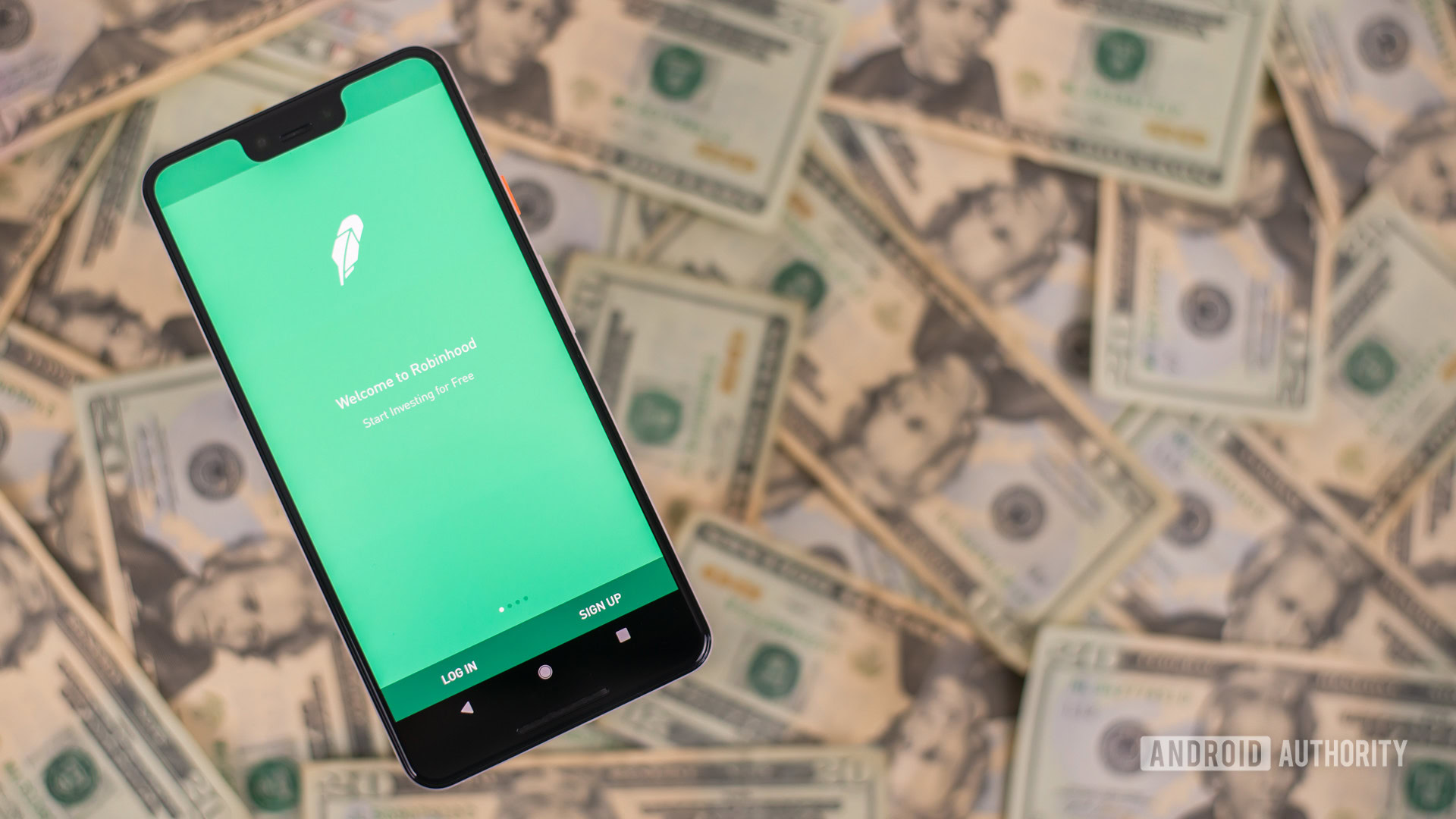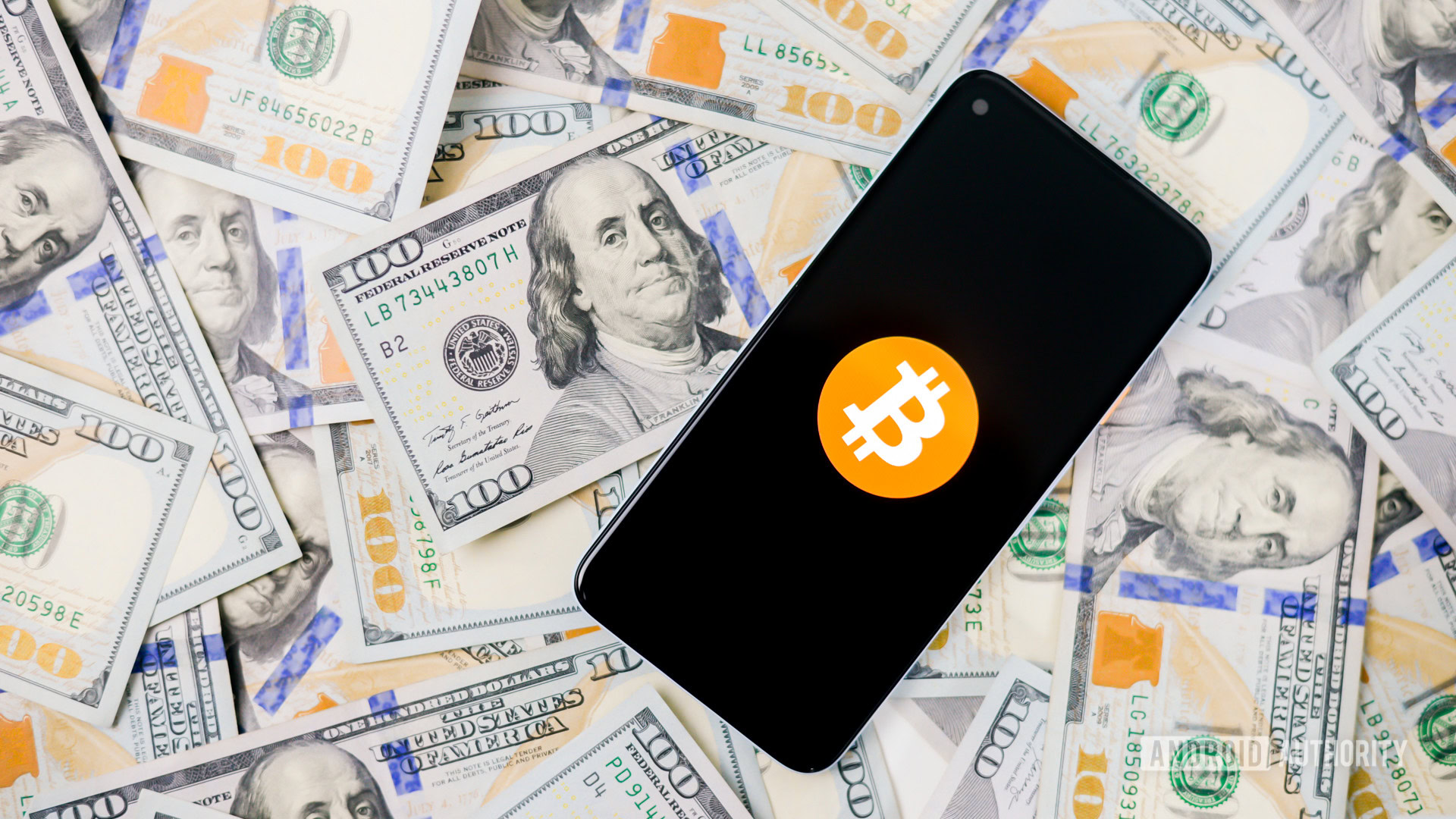Affiliate links on Android Authority may earn us a commission. Learn more.
How to invest $100: Small decisions now can add up
$100 isn’t a huge investment, but successful investing is about taking small steps on the right path. Let’s look at how to invest $100 if that’s all you’ve got to start with.
Disclaimer: This article is for information purposes only. It is not intended to be investment advice. Seek a duly licensed professional for investment advice.
QUICK ANSWER
The best way to invest $100 is to pick a suitable asset class (like stocks or ETFs), find a low-cost broker, and do your due diligence before buying anything.
JUMP TO KEY SECTIONS
How to make your $100 investment go far
With the right investment strategy, your $100 can do some work. But the first goal for investing your $100, in whatever manner you choose, is to avoid fees.
It’s all too common to pay a fee for a service. For example, if you’re paying a $10 commission to buy stock on the stock market through a broker, you’ve immediately lost 10% in fees. Not good. That’s acceptable when you’re investing $10,000 with a $10 commission: it’s just 0.1%. So at the $100 level, investing needs to be ultra-cost-effective.
First things first: no fees. At the $100 level, investing needs to be ultra-cost-effective.
Therefore, we’ll focus on free or lower-cost brokers and investment accounts and work through other ideas. There may be other viable options. Even just keeping it in the bank means you’ll live to invest another day. But here are some considerations taken from advice from the investment community.
Investing is hard, don’t be fooled. Some of the world’s best investors rarely sell their stocks, preferring to hold them forever. Long-term plans based on research and education may be better than dipping your toe in with $100, so do take note of this option.
Investing $100 in ETFs
ETFs, or exchange-traded funds, allow you to invest in many shares at once. They are useful ways to invest in the market without picking good stocks: ETFs follow a basket of stocks (like the entire S&P 500 index) in a single share.
ETFs: simple, powerful, low fees. They're worth taking the time to understand.
ETFs have power because individual shares may be priced very low even though they follow trillion-dollar markets. For instance, Vanguard’s Total World Stock ETF is listed as VWOB and is, at the time of writing, $80 on the NYSE. That means you can buy one share of it today and save the $20 or so leftover for your next investment.
Another ETF, Vanguard’s best-performing ETF over the last ten years in the US stock market ETF list is MGK, which is currently trading at approximately $190. That’s more than $100, but it gives you an idea of what $100 or thereabouts can get you.
We’re not advocating you go out and buy either of these ETFs, to be clear. They’re just examples of what big ETFs can be bought for around $100.
Some brokers allow you to buy fractional shares and ETFs, opening the door to many well-known options.
If you’re looking to invest in everything the US stock market offers, the ever-popular SPDR S&P 500 ETF (ticker SPY) or Vanguard S&P 500 (ticker VOO) might be worth considering. Having said that, these are far above the $100 price point. You’ll have to find a broker that allows fractional purchases. That means your $100 investment in an ETF with a valuation of $500 will get you 0.2 units/shares. Don’t worry, we’ll discuss this in more detail later.
As for why we picked Vanguard? Well, it helps that Vanguard is well-known and reputable. It also has no commission on its investment account for most ETFs, and its ETFs have competitive expense ratios. You’ll need a Vanguard Brokerage Account, which involves signing up, proving your identity, and so on. Blackrock has similar super-low fee ETFs under the brand iShares, but those go through Fidelity for commission-free trading. It’s your decision.
Free brokerage apps like Robinhood or Charles Schwab will also let you buy some ETFs without commissions. Again, you’ll need to get the app or account, verify your identity, and go from there.
Investing $100 in stock

Buying a single stock is also a valid form of investment, although it’s a slightly riskier strategy than ETFs. This is because your risk is concentrated when you buy a stock, while it’s dispersed across many shares in an ETF. You’ll also quickly find that $100 can’t buy a single stock! One share in Apple is around $140. Google is $2,300. Amazon is $2,200.
Now, you can buy cheaper stocks like Dropbox for $20 a share, but again, if you want to buy a share that costs more than your budget, you’ll have to pick a broker that supports fractional shares.
Buying one share or buying many fractional shares: new options open up the market.
What is a fractional share? It’s a piece or a fraction of a share, and they can be absolutely tiny, as small as one-thousandth of a share. Many platforms, including Charles Schwab and InteractiveBrokers, offer the ability to purchase fractions of a share these days. They will let you buy a few fractions of Google or Amazon with your $100. And if Google goes up 10%, so will your invested amount.
Read next: How to invest as a beginner
There are some minor differences that you should know: for example, owning regular stock gives you shareholder rights and the ability to attend meetings. However, while the downsides of fractional shares are real for most people, it’s still a great way to get started as you upgrade towards buying a whole share of normal stock.
Investing $100 in cryptocurrency (tread carefully)

Want to invest in a new-age asset class? Many now consider cryptocurrencies like Bitcoin and Ethereum as legitimate long-term investments. Having said that, digital currencies are still quite volatile. This makes them far riskier than other options on this list, especially if you buy newer and lesser-known coins.
You can invest as little as a few dollars, and you don’t have to buy one whole Bitcoin! Bitcoin is hovering at around $30,000 at the time of writing, but you can buy fractions once again.
While the cryptocurrency market as a whole is extremely volatile, big names like Bitcoin and Ethereum have appreciated in value over the long-term.
If you’re willing to experiment, consider setting aside a portion of your $100 (say $10—20) to invest in cryptocurrency. You can then monitor its growth (or downfall) before committing more money. While the asset class is known for its volatility, the market usually follows boom and bust cycles every few years. Try not to buy into the hype and prioritize long-term investments and established names.
You’ll need to jump through a few hoops if you sign up with the likes of Coinbase or other crypto providers and apps, but this is a necessary step to get your cryptocurrency back into hard currency, so it’s worth the hassle.
Continue reading: How to buy cryptocurrency
Should you invest your money in crypto? Is it a good idea? We cannot give you that advice since everyone’s risk profile looks different.
Education: Investing in yourself

Get yourself a pair of headphones to listen to regular finance and money podcasts to boost your understanding. Get your phone sorted out if it’s not reliable: get the battery life improved or battery fixed so you can focus, or fix the screen to make it readable. These are small things but they’re low-cost or free.
Not all education costs! There are free resources, too. Here’s a list.
Subreddits
- r/personalfinance — A big, busy subreddit covering budgeting to investing. Personal, but always interesting. Tip: Using this filter will limit topics to investing topics only.
- r/investing — A focused subreddit but with investing news and views too. This list of FAQs is a great point to start with and come back to.
- r/bogleheads — A small subreddit devoted to long-haul, passive investing champion John Bogle, founder of Vanguard.
Books
- The New Coffeehouse Investor: How to Build Wealth, Ignore Wall Street, and Get on with Your Life — by Bill Schultheis. A commonly gifted book to new investors. Take my advice: buy a used or second-hand edition listed as good condition or better. You have to be frugal with $100!
- Investing for Dummies — Don’t overlook this book, as it contains lots of helpful advice. Again, buy used, save your cash.
Podcasts
- NPR’s Planet Money and The Indicator
- Listen Money Matters
- Radical Personal Finance
- For Australians only: The Money Cafe
Apps
Here’s a list of the best investing and finance apps, including Acorns, Robinhood, Investing.com, M1 Finance, JStock, MyStocks, and StockTwits.
$100 investment techniques: Dollar-cost averaging
This section isn’t an idea for investing $100, but a technique for how to do so regularly.
Dollar-cost averaging is where you invest in the markets regularly with the same amount of money. Invest each week or each month. Why? The power is in regular investing. You aren’t trying to strike the best price, but you’re investing. It’s called DCA, and it works. Here’s a Reddit discussion on the matter.
Here’s an example:
- You invest $100 every month on the 14th: September 14, October 14, November 14, etc. The day is the same, the amount is the same, and the investment choice (ETF, stocks, and so on) is the same.
- After 12 months, you have invested $1,200.
- You’ve bought a different number of shares in stock each time, due to price fluctuations.
- This way, you aren’t attempting to time the market, but get more of your money into the market for longer, rather than waiting.
Dollar-cost averaging is a long-term approach and the very opposite of day trading. All do not recommend it, but it is a strategy that makes sense for many.